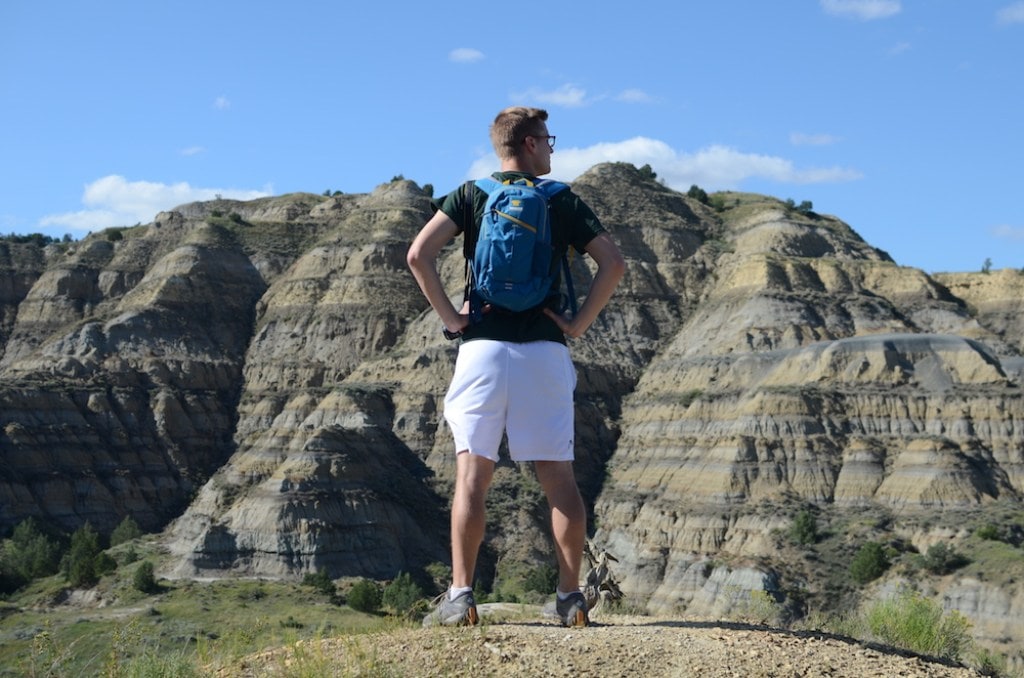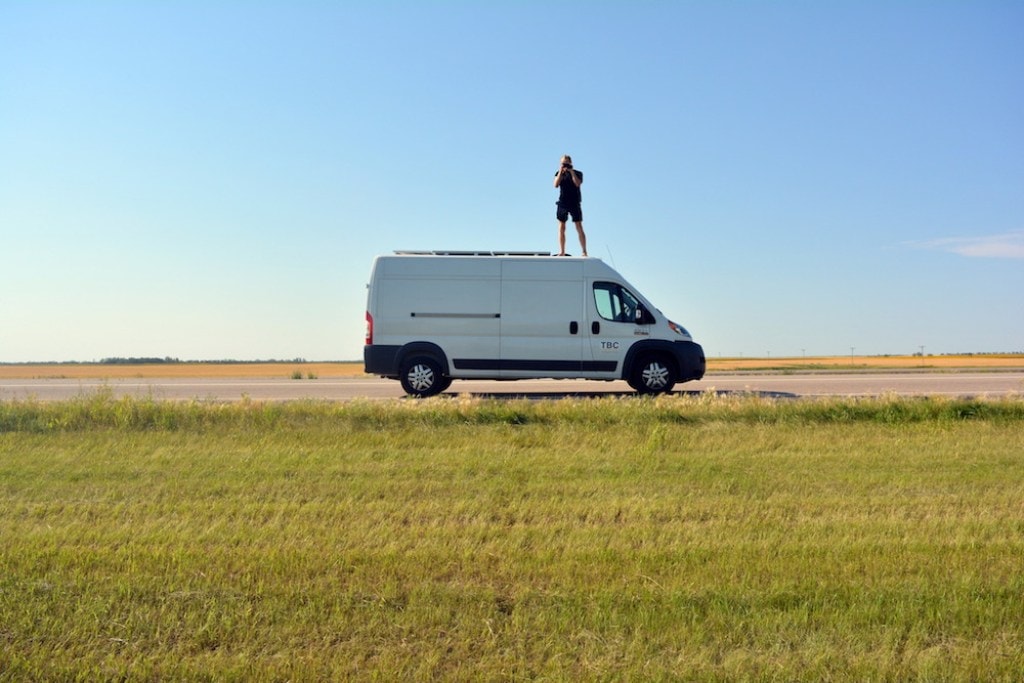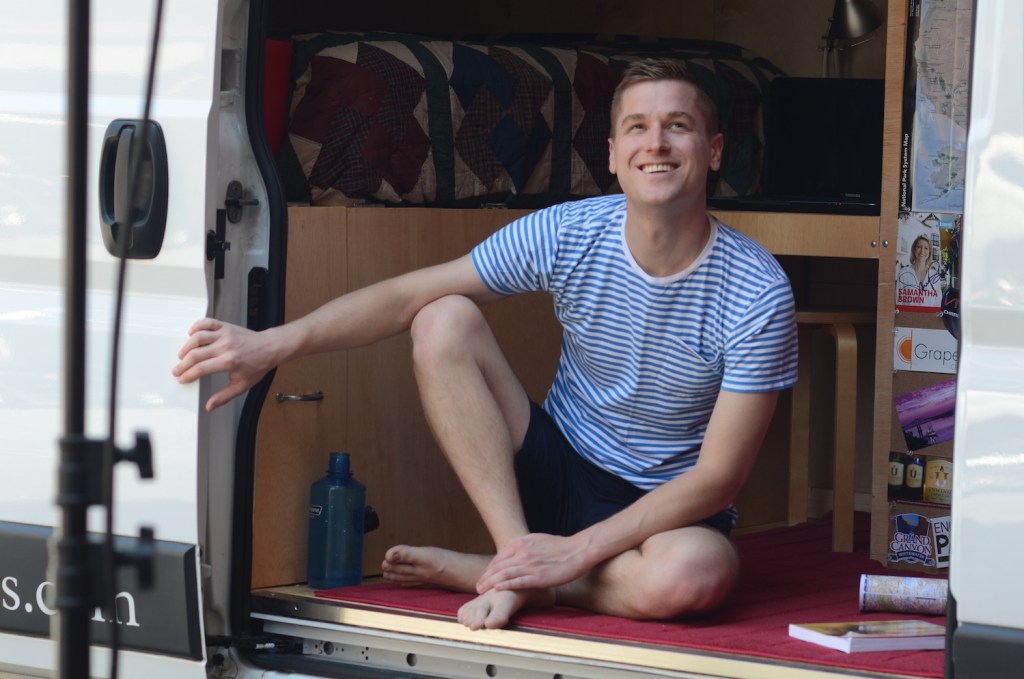“You don’t have to be a ‘type’ to get outside and experience the world.”
Mikah Meyer was 19 when his father passed away from esophageal cancer at age 58. Losing his father showed him that retirement wasn’t guaranteed. So after two epic road trips, he made a deal with himself: Instead of working from age 25 until 65, he’d take at least one year off every five years (at ages 30, 35, 40, and so on) to pursue one of his retirement dreams. “That way, if I die at age 58 like my father, I will have already had seven years of retirement and not missed out on the time we think we’re promised,” says Meyer.
This year, Meyer moved into a van and hit the road to experience all of the National Park Service’s (NPS) units. We caught up with him to hear more about his adventure.
What inspired you to want to see all of our park properties?
MM: When I turned 28 in 2014, I decided I wanted to see all of America’s national parks. Assuming, like many people, that only meant the Grand Canyon, Yosemite, Everglades, and others included in the 59 National Parks, my naiveté was corrected when I discovered the National Park System actually has 400+ sites, many of them just as awesome as the 59 national parks—just without the Congressional stamp making them capital N and capital P.
It turned out the year I’d turn 30 (2016) would also be the 100th anniversary of the NPS, and my journey to 400+ units wouldn’t just make me the youngest person to experience them all, but also the only person to do it in one continuous trip. When I found out the average parks visitor was nearly 60, and the LGBT community has traditionally been a difficult demographic for the Parks Service to reach, I realized by being a 30-year-old, openly gay man, I could use the trip to help others, to make my alternative retirement about more than myself.

Caprock Coulee Trail in Theodore Roosevelt National Park | Photo courtesy of Mikah Meyer
When and where did you start, and how long do you expect it’ll take to complete?
MM: I launched the trip on April 29, 2016, at the Washington Monument in Washington D.C., which I picked for two reasons:
The first being that April 29 was the day my dad passed away 11 years earlier. For each year since 2005, that day has been really tough and filled with sadness. Because so much of this journey has to do with that day, I decided to repurpose it and take April 29 from being a day of sorrow to a day of triumph.
I chose the Washington Monument partly because I was living in a D.C. suburb at the time, but also because I wanted to start somewhere iconic. Somewhere everyone would recognize, but likely not know is actually one of the 400+ national parks. My goal of ending at the Lincoln Memorial—just across the reflecting pool—is meant to symbolize a full circle, taking me from one existence in 2016 to another when I finish in (hopefully) 2019. The 100th anniversary of the National Parks Conservation Association, a non-profit advocating for the parks, will be just 20 days after my initial plan of 3 years, so I made May 19, 2019, my new target end date.
What does your transportation and living situation look like?
MM: After 1.5 years of pitching any car/RV company you’ve ever heard of in hopes that they’d sponsor my journey, I settled on joining the #VanLife movement by buying and converting a cargo van into a home on wheels. I ended up finding a 2014 Ram Promaster 2500 van (6′ 4″ tall inside, bare) owned by a local candle company. The man selling it had lost his wife to cancer only a few years before and had taken a road trip eerily similar in route to the 260-day, 16,400-mile one I took at age 25 as a way to heal. I only had the budget to pay him 80 percent of what he was asking, so he’s trusting that over the next three years I’ll earn enough donations on my website to pay off the rest, or if people buy their Unwined Candle products and use the discount code TBCMIKAH, then 40 percent of each purchase using that code will go toward paying off the van.
Though I initially planned this van to be just a home for one, when my boyfriend decided to join the trip a few weeks before it launched, those 72 square feet got a little more cramped. We’ve found it’s difficult for two people to be moving around at the same time, but overall, having him with me has been such a blessing. It’s made boondocking (sleeping in parking lots or random streets) much less scary. Plus, he came up with my van’s name: Vanny McVanface. Titled in honor of the scorned “Boaty McBoatface” that the British government denied after their citizen vote to name a new vessel.

Vanny McVanface | Photo courtesy of Mikah Meyer
Have you discovered any favorite NPS units that you didn’t know existed before you started touring the country?
MM: Yes! Before my trip launched, I would use Acadia National Park, which started out as a national monument, as my example of how there are amazing parks outside of the popular 59, but only a few months into my trip, I’ve already visited some new examples.
Sleeping Bear Dunes National Lakeshore and Pictured Rocks National Lakeshore were the first “Wow!” parks I encountered on this trip. Both are in the upper half of Michigan, and each is stunning in its own way.
Sleeping Bear Dunes reached me because of its gigantic sand mounds descending into Lake Michigan at a dramatic angle. Numerous signs warn visitors not to tumble down these dunes, as it will take two hours to climb back up. Yet one by one you see people tumble down… then begrudgingly climb back up on all fours.
Pictured Rocks was gorgeous because of the multi-colored rocks that give the park its name, but what really surprised me was how tropical they made Lake Superior appear (it being the coldest of all the Great Lakes). After viewing the rocks from the water, I hiked in from the shoreline forest to one of the park’s sandy beaches. The color of the water, the juxtaposition of the rocks, and the brave Michiganders swimming in the 50-some-degree water all made it appear more like the Caribbean than the Upper Peninsula of Michigan.
After leaving each of these parks, all I could think was, “How many people ignore these amazing places because they aren’t one of the 59 national parks? What a loss.” I hope my trip helps expose more people to awesome places like these.
HP: Do you get an opportunity to hike or explore the NPS units?
MM: Totally. Though many Facebook commenters seem to think I’m driving past the parks at breakneck speed, my first stop at every unit is to the visitor center where I ask a ranger, “What would you suggest I do to fully experience this park?”
I cannot recommend highly enough talking to rangers at any park someone visits. These people are super passionate about the parks and it’s essentially like having a local tour guide. They can even help tailor your activities to your likes.
What are some life lessons you think you’ll take away from this trip?
MM: Hmm, right now I’d say that Instagram is complete bullshit. I’ve followed lots of popular #vanlifers and travelers since beginning this trip, and it’s all so fake. I mean, it’s real, but when you see those stunning shots of people casually blogging from a hammock, they probably spent 20 minutes staging it, their back hurts from the weird angle, and they can’t actually see the computer because of the sun’s glare. I feel like social media is turning what was supposed to be real life into one giant advertisement.
So take everything with a grain of salt. While we all like seeing beautiful people in beautiful places, the reality is life is raw and imperfect, which can also be beautiful in its own way.
Another lesson: Persistence pays off. During the two years of planning for this trip, it often felt like it would never come to fruition, nobody would care, and I’d come home with my tail between my legs and a superfluous white windowless van. Answers might not always come quick, but that’s part of life. For example, I started this trip paranoid that any potential sponsor would lose interest the second they found out I was gay. It kept me from fully living into the goal of encouraging other LGBT people to get out there, in whatever way they think they can’t. Once I shed that fear, I found my differences were not a weakness but a blessing.
And finally, America is an amazing country. Never let anyone tell you we aren’t already great because not only do we possess an amazingly diverse geography, but also an incredible populous.
Is there anything you’d like to add?
MM: One big thing I try to get out there is that I’m not some champion trail runner or expert rock climber. I studied classical singing, for goodness sake! What I hope that shows is that you don’t have to be a ‘type’ to get outside and experience the world.
Especially as someone who’s gay, I didn’t have any LGBT role models in the adventurer milieu, and as Marian Wright Edelman says, “It’s hard to be what you can’t see.” So I hope my trip inspires people to get out there and do whatever it is they dream about—even if they don’t see anyone doing it.

Photo courtesy of Mikah Meyer
This interview has been edited for length.
